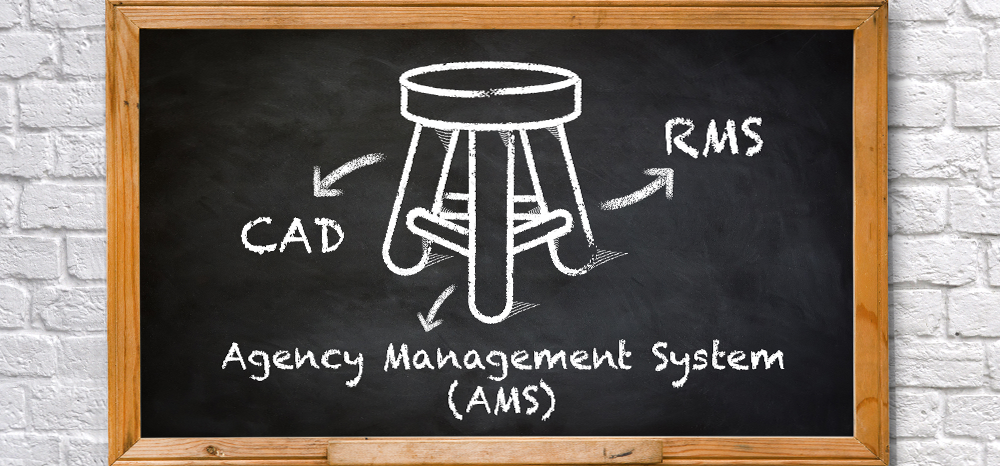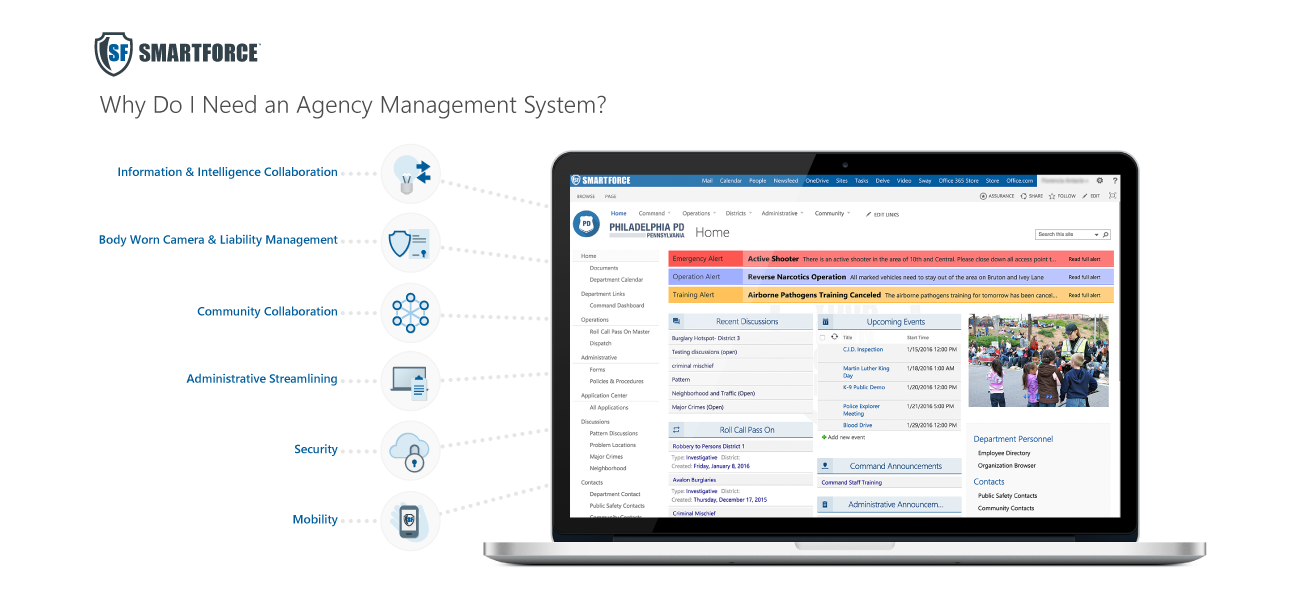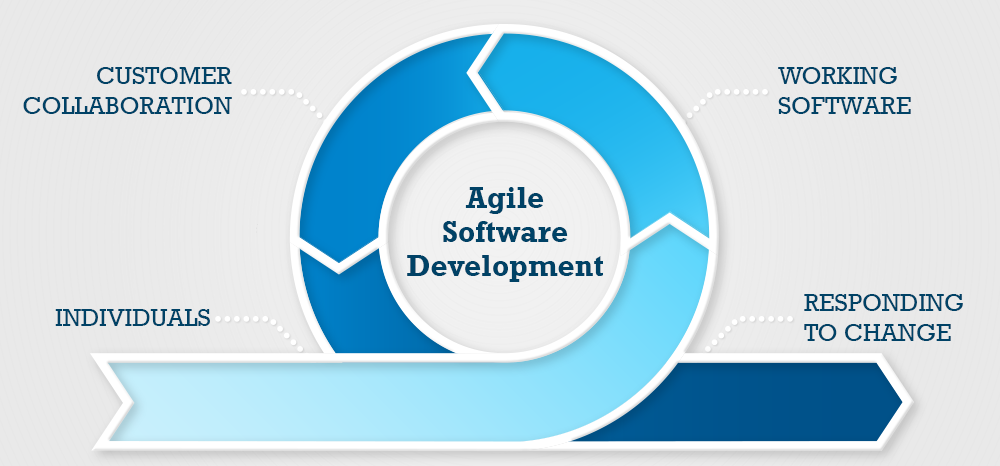 Brian Mc Grew
Brian Mc Grew
VP of Education
 You’ve all heard of CAD and RMS and know they are integral systems for operating a law enforcement organization. However, in today’s policing a new system is required. The third leg of the Police “3-Legged Stool” is an Agency Management System (AMS). Thankfully this third system does not come with the same price tag or require the intense resource allocation of CAD and RMS, but it is equally integral to operating in an environment of ever increasing demands that outpace government budgets.
You’ve all heard of CAD and RMS and know they are integral systems for operating a law enforcement organization. However, in today’s policing a new system is required. The third leg of the Police “3-Legged Stool” is an Agency Management System (AMS). Thankfully this third system does not come with the same price tag or require the intense resource allocation of CAD and RMS, but it is equally integral to operating in an environment of ever increasing demands that outpace government budgets.
Why Do I Need an Agency Management System?
With today’s increased demands and expectations on law enforcement agencies, gone are the days of just responding to calls for service and writing reports. Therefore, a third software solution is required in addition to CAD and RMS systems. In general, Agency Management Systems (AMS) enable quicker search and access to critical data, targeted information sharing, user-friendly electronic workflows, and facilitate collaboration so key initiatives and group problem solving are accomplished more efficiently. SmartForce™ is a unique AMS since it is law enforcement specific, meets the Criminal Justice Information Services Division’s strict standards for security, and allows for internal and external collaboration. Other off-the-shelf systems do not meet this criteria, are not designed to account for today’s evidence-based law enforcement complexities or workflows, and provide limited information-sharing features.
What Makes SmartForce™ So Great?
The SmartForce™ Agency Management System (AMS) enables law enforcement agencies to manage their ever increasing amount of data and complex departmental functions more accurately and efficiently, as well as improve intelligence-led and community-policing strategies.
Best of all, SmartForce™ was designed for officers—to be user friendly and secure—with input from more than 300 public safety customers. Today, we have customers from coast to coast ranging from small to large market police departments, sheriffs’ offices, and even a gang and intelligence fusion center all using SmartForce™ and continuing to provide us feedback on how it can make their jobs easier and provide greater levels of public safety.
Let’s face it…you’re constantly called to do more with less. SmartForce’s technology does more by helping your agency work Smarter! Positive outcomes of our SmartForce™ AMS include:
- Better execution of crime reduction and prevention strategies
- More efficient management of community-policing efforts during uncommitted patrol time
- More procedural justice transparency and quicker reporting for command staff, elected officials, the general public, or media
- Faster communication of incident details to officers, particularly in life-or-death situations
- Better management and reporting of high liability concerns like use-of-force and complaints
- More automated administrative processes (e.g., tasks, shift change assignments, document management), enabling more uncommitted time
- Easier management of training, compliance, and reporting workflows
- More collaboration with neighboring agencies and community partners
Other Agency-relevant considerations that guided Adventos’ development of SmartForce™ include:
- A mobile-friendly design enabling ease-of-use on desktop computers, MDC’s, tablets, and smartphones
- New hardware isn’t needed
- An intuitive design for all levels of sophistication and agency sizes
- Quick and effective training
Meaningful Intelligence Sharing
Availability — Information sharing isn’t enough. Information needs to be shared to the right people, with the right priority…instantly. Information must also be found quickly with a deep search engine that can even dig through pdf’s, video, and audio files. Available information is the only valuable and actionable information. Email fails to meet these criteria. SmartForce™ ensures law enforcement personnel can access and share the critical information they need, when they need it.
Internal Group Problem Solving — SmartForce™ helps agency groups solve problems by providing easy access to relevant data as well as real-time discussion threads and bulletin boards to collaborate and complete projects together in a faster period of time.
Community Group Engagement — SmartForce™ lets community groups and local businesses share content like building blueprints, surveillance video, photos, and crime prevention strategies; engage in real-time discussions; and post questions and answers among key organizational leaders, task forces, and other agencies. Business owners, schools, HOAs, churches, and other community partners that have used these features report immediate and improved feelings of security and a better connection to law enforcement agencies.
Security
SmartForce™ enables departments to set permissions and security features for specific job functions from sworn to non-sworn in regard to criminal investigations, situational awareness, and administrative tasks.
SmartForce™ is hosted in Microsoft’s Government Cloud, so mission-critical data is secured in a CJIS compliant environment, and always accessible. In states where a signed information agreement is necessary, Microsoft has signed the Security Addendum of the FBI CJIS Security Policy which requires Microsoft to meet the same requirements public safety and law enforcement agencies are held to. It also means your agency can prove compliance by using the signed Security Addendum as evidence.
Mobility First
SmartForce™ reduces unnecessary administrative and travel time for officers in the field. Many functions previously requiring administrative extra steps and travel are easily and securely performed in SmartForce™, from anywhere. For example, officers returning from off-duty can be caught up immediately by scanning the SmartForce™ shift briefing board from their smartphones and there is no need to burn DVD’s of video/photo evidence to be couriered to the District Attorney’s office during case preparation for court proceedings.
Most Popular SmartForce™ Features
Information and Intelligence Collaboration
- Roll-Call/Shift Briefing Bulletin Boards
- CJIS compliant Bulletin Dissemination
- Real-Time Criminal Intelligence
- Officer Safety Intelligence
- Discussion Threads to collaborate on pattern crimes, problem locations, major crimes and neighborhood/traffic
- Photo, Video, Bulletin, and Warrant Libraries
- Assigned Problems Manager
- Alerts and Announcements Manager
- Community Bulletin Board
Body Worn Camera and High Liability Management
- Response to Resistance Reporting
- Complaints and Commendations Reporting
- Compliance Management
- Training Officer Management (FTO, PTO, or Modified)
- Public Information Officer
- Video Library Management
Community Collaboration
- Community Partner Access Sites for Neighborhood Watch, Schools, Business Watch, Task Forces, etc.
- Community Leaders Discussion Forum
- Community Request Management
- Activity/Initiative Management
- Community Policing Outreach
Administrative Streamlining
- Legal, Policy, and Training Acknowledgement
- Document Management
- Calendar Management
- Forms Library
- Policy Library
- Inventory or Quartermaster Management
- Extra-Duty
- Public Safety and Community Directory
- Absence and Vacation Tracking, including approval workflows







 According to a study that was conducted by IBM in 2015, the average cost of a data breach is currently at an all-time high: $3.8 million dollars. The United States government has recently participated in the creation of a Cybersecurity National Action Plan, also referred to as CNAP. Accompanied by a federal budget increase of $19 billion dollars between now and 2017, this plan emphasizes the importance of investing in an aging federal IT infrastructure on an ongoing basis.
According to a study that was conducted by IBM in 2015, the average cost of a data breach is currently at an all-time high: $3.8 million dollars. The United States government has recently participated in the creation of a Cybersecurity National Action Plan, also referred to as CNAP. Accompanied by a federal budget increase of $19 billion dollars between now and 2017, this plan emphasizes the importance of investing in an aging federal IT infrastructure on an ongoing basis.



